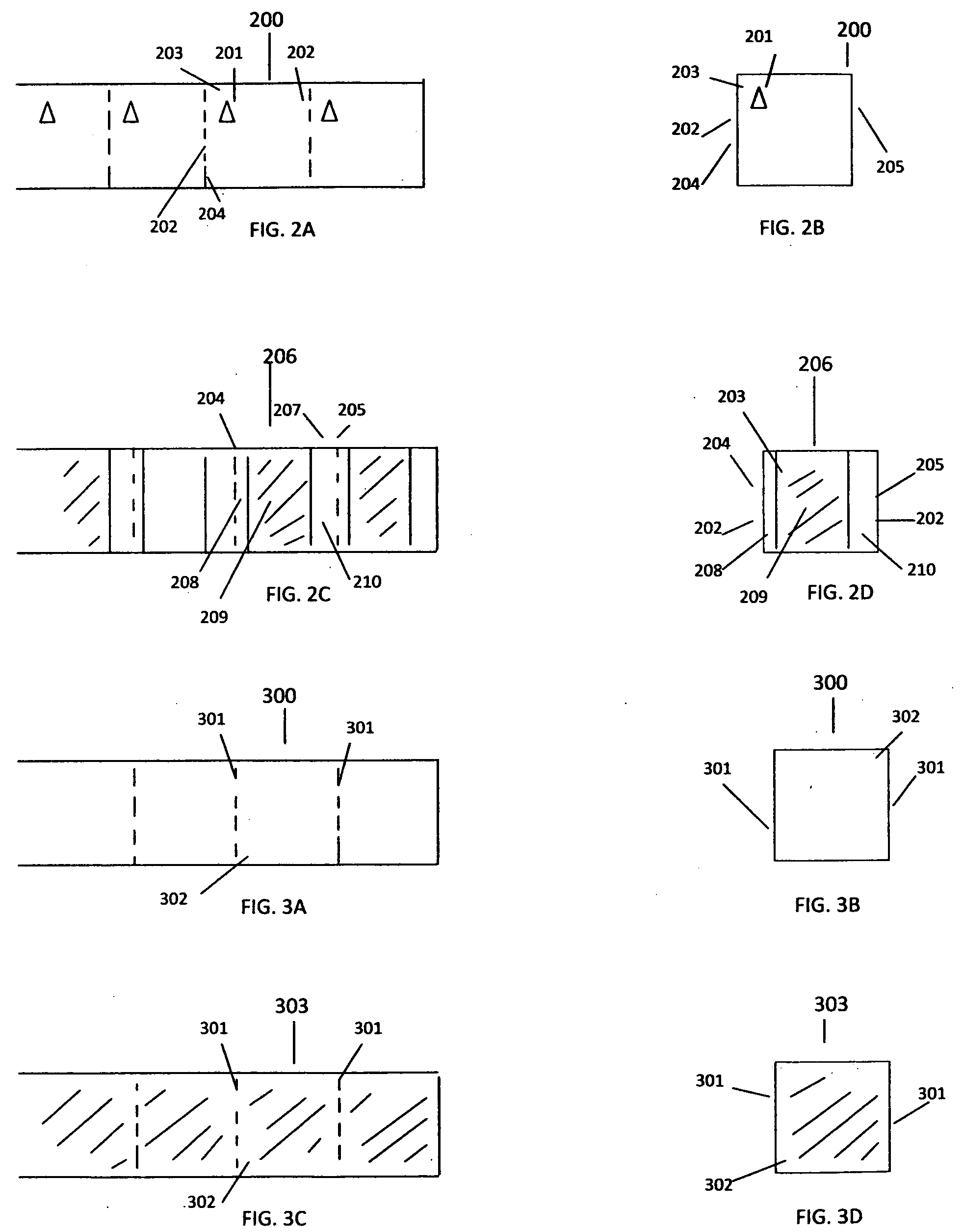Painter's tape for corners
a technology for corners and tape, applied in the field of painter's tape for corners, can solve the problems of low manufacturing cost and inconclusive testing, and achieve the effects of reducing time and energy, quick, easy and inexpensive, and quick and easy application
- Summary
- Abstract
- Description
- Claims
- Application Information
AI Technical Summary
Benefits of technology
Problems solved by technology
Method used
Image
Examples
Embodiment Construction
[0031]FIG. 1A depicts a roll of masking tape 100 of the prior art with exceptionalities which comprise the preferred embodiment of the present invention. The composition of the materials used for the tape strata, the composition of the adhesive, and the composition of the inner core of the roll are prior art. The dorsal aspect of the tape while still attached to the body of tape is depicted by 101. A perforation axis 102 which extends the width of the tape, is utilized by the user to separate a segment of tape from the roll, as depicted in FIG. 1B and FIG. 1D. The 90 degree angles of the tape segment 103 enable the user to prepare for painting adjacent to a surface with multiple 90 degree angles such as multiple rooms comprised of corners at ceilings and floors, door jambs, moulding corners, and window pane corners with significant reduction in time, energy, and stress compared to the present method of tearing off tape that does not tear off with a straight edge. FIG. 1C depicts the...
PUM
| Property | Measurement | Unit |
|---|---|---|
| Angle | aaaaa | aaaaa |
| Length | aaaaa | aaaaa |
| Adhesivity | aaaaa | aaaaa |
Abstract
Description
Claims
Application Information
 Login to View More
Login to View More - R&D
- Intellectual Property
- Life Sciences
- Materials
- Tech Scout
- Unparalleled Data Quality
- Higher Quality Content
- 60% Fewer Hallucinations
Browse by: Latest US Patents, China's latest patents, Technical Efficacy Thesaurus, Application Domain, Technology Topic, Popular Technical Reports.
© 2025 PatSnap. All rights reserved.Legal|Privacy policy|Modern Slavery Act Transparency Statement|Sitemap|About US| Contact US: help@patsnap.com



